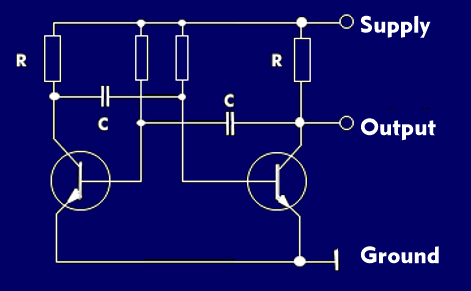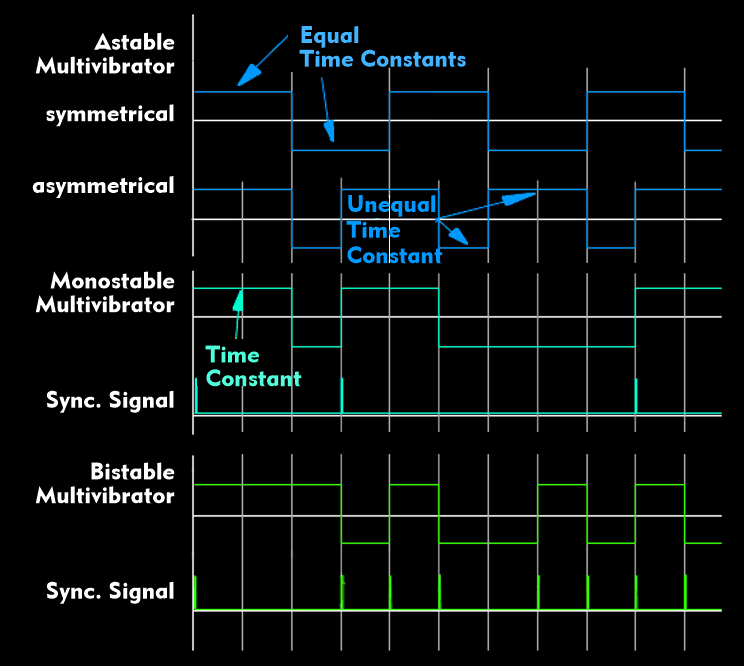multivibrator
Multivibrators are electronic toggle circuits that generate oscillations. Multivibrators can generate individual pulses, triggered by a synchronization signal, or a continuous oscillation train. According to this approach, a distinction is made between astable, monostable and bistable multivibrators.
Multivibrators operate with two active components which alternately switch into the saturation range. When one active component is in the switched state, the other is in the unswitched state, and vice versa.
Astable multivibrators have no stable states and oscillate freely. The period of the continuous oscillation is determined by the time constant of the RC elements.
Monostable multivibrators have a stable state from which they are switched by a synchronization pulse to the second state, which, however, is unstable. This unstable state lasts for a certain time, which is given by the time constant of the RC elements. After the time constant expires, it falls back from the unstable to the stable state.
The bistable multivibrator, known as a flip-flop, has two stable states, which it is switched by a synchronous signal. Each stable state is maintained until another sync pulse switches the bistable multivibrator to the second stable state.
The waveform generated by multivibrators is usually a square wave signal because the active devices operate in the saturation region due to feedback. The ring oscillator has a similar functionality to the multivibrator.


